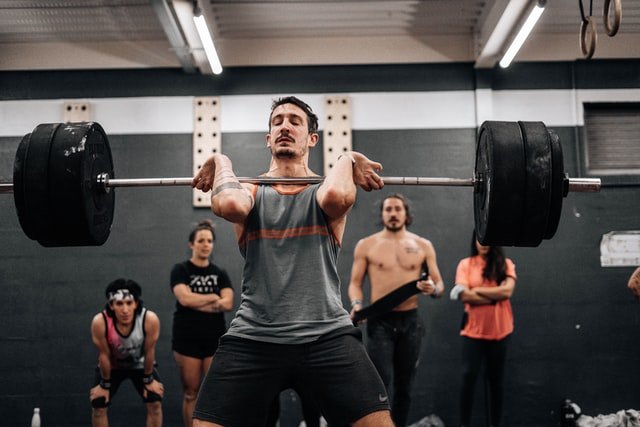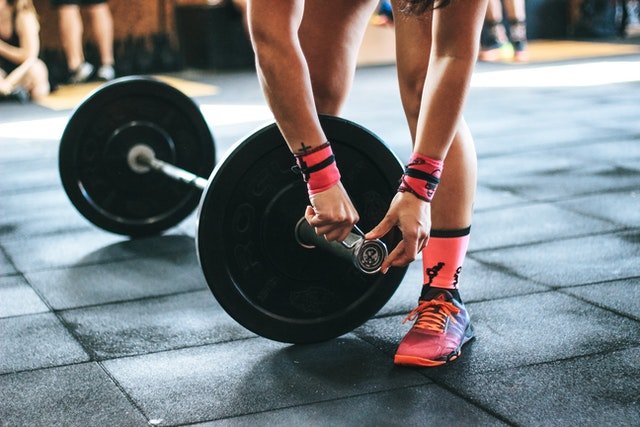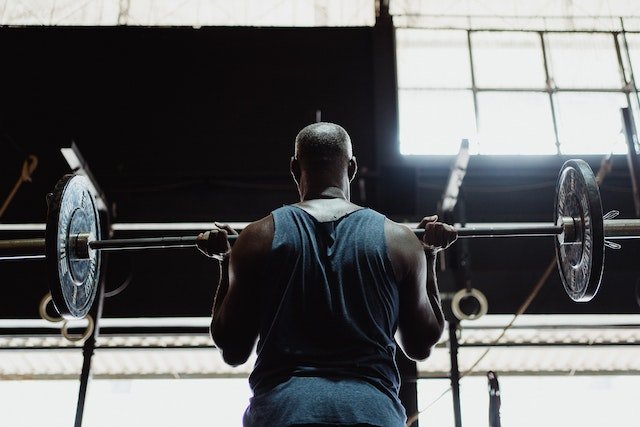
Why Do Squats Burn My Thighs? 13 Crucial Factors To Consider
A lot of people think that squats are just a leg exercise, but they’re really not. Squats are a full-body exercise that work your thighs, glutes, and hamstrings.
However, if you’re finding that squats are burning your thighs more than anything else, there’s a good reason for that.
Squats are one of the most popular exercises around, but they can also be one of the most punishing.
So what’s really going on when you do a squat? Why does this particular exercise burn so many calories and work so many muscles? Read on to find out!
Why do squats burn my thighs?
There are a few reasons why squats can be tough on your thighs. First of all, they require a lot of energy. You’re not just moving your legs up and down – you are working your entire body and you’re also fighting gravity the whole time. Second, due to the fact your quads are the primary mover in this exercise and that they are the biggest muscle group in your body, lactic acid can build up in your muscles, which is a by-product of exercise that can cause muscle soreness. Third, are you taking time to warm up properly? If you aren’t doing so, your workout will be more difficult, and you might find your thighs burning more than usual, while also potentially straining your hip flexors and iliotibial band. Your form might need some work, you may be trying to lift too much weight, or do you have range of motion issues? Finally, if you’re new to squats (or if you haven’t been doing them regularly), your body may not be used to the movement. This can lead to some serious DOMS (delayed onset muscle soreness).
Muscles involved in squats
Now that we know some of the reasons why your thighs might burn after doing squats, let’s take a look at the muscles involved in this exercise.
As we mentioned, squats are a full-body exercise. This means that they work multiple muscle groups at the same time. However, the main muscles involved are the quads, glutes, and hamstrings.
The quads are the largest muscle group in the body, so it’s no surprise that they are the primary mover in this exercise. The quads are responsible for extending the knee, and they also help to stabilize the knee joint.
The gluteus maximus, or the glutes, are one of the largest muscle groups in the body. So it’s no wonder that this exercise works them hard. The glutes are responsible for extending the hip, and they also help to stabilize the pelvis and low back.
Let’s look more in-depth at some of the reasons why your thighs burn when doing squats…
Lactic acid build-up
One of the main reasons why your thighs might burn after doing squats is due to the build-up of lactic acid in your muscles.
When you exercise, your body uses two different systems to produce energy. The first is the aerobic system, which uses oxygen to produce energy. The second is the anaerobic system, which doesn’t use oxygen to produce energy.
The anaerobic system is what’s used when you exercise at a high intensity. When you do this, lactic acid builds up in your muscles. This is why your muscles might feel burning or fatigue when you exercise at a high intensity.
Lactic acid is a by-product of exercise, and it can cause muscle soreness. When you do squats, your quads are working hard to extend your knees and stabilize your body. This can lead to the build-up in your muscles, which can cause your thighs to burn.
To help prevent this, make sure that you warm up properly before your workout. dynamic stretching and foam rolling are both great ways to warm up your muscles and help prevent lactic acid build-up.
Primary mover
As we mentioned, the primary mover in squats is the quadriceps. The quads are the largest muscle group in your body, so it’s no surprise that they can be tough on your thighs.
When you do squats, your quads are working hard to extend your knees and stabilize your body. This can lead to the build-up of lactic acid in your muscles, which can cause your thighs to burn.
Another reason why your thighs might burn after doing squats is that they require a lot of energy.
You’re not just moving your legs up and down – you are working your entire body and fighting gravity the whole time, which can lead to your muscles burning.
Squats are a great exercise for building strength and muscle, but they can be tough on your body.

DOMS
Delayed onset muscle soreness, or DOMS, is a common side effect of exercise. It is caused by microscopic tears in your muscles, and it can lead to pain and stiffness in your muscles.
DOMS is most common when you start a new workout routine, or when you increase the intensity of your workouts. This is because your muscles are not used to the new movement or intensity, which can lead to microscopic tears.
If you are new to squats, or if you are increasing the intensity of your workouts, you might experience DOMS.
DOMS is a normal part of exercising, so don’t worry too much, although I know how painful the sensation can be.
There are a few things that you can do to help relieve the pain of DOMS. First, try taking an over-the-counter pain reliever, if the soreness is severe.
You can also try using a foam roller or massage ball to massage the affected muscles, but again this can be hard for you to take if the DOMS are bad.
Related: Why Do Squats Feel So Heavy? Everything You Need To Know To Get Back On Track
Iliotibial band syndrome
One of the reasons why your thighs might burn after doing squats is iliotibial band syndrome.
The iliotibial band is a band of tissue that runs from the hip to the knee. It helps to stabilize the knee joint.
Iliotibial band syndrome is a knee injury that occurs when the iliotibial band, located on the lateral aspect of the knee, becomes inflamed due to friction with the femur’s lateral epicondyle.
Put simply…When you do squats, the iliotibial band rubs against the bone on the outside of the knee. This can cause irritation and inflammation, which can lead to your thighs burning.
Pain is felt most commonly on the lateral aspect of the knee and is most intensive at 30 degrees of knee flexion.
To help prevent iliotibial band syndrome, make sure that you warm up properly before your workout and stretch the iliotibial band.
Hip flexors
The hip flexors are a group of muscles that help to flex the hip. They are located in the front of the hip and thigh.
One of the reasons why your thighs might burn after doing squats is that the hip flexors are involved in the movement.
When you do squats, the hip flexors work to flex the hip. This can lead to the muscles becoming tight and irritated, which can cause your thighs to burn.
Stretching your hip flexors and maintaining good squat form will help prevent workout injuries. When stretching, make sure to focus on keeping your knees from pointing inwards.
Are you building up gradually?
If you’re just starting out with squats, your thighs might burn because your muscles are not used to the exercise.
When you first start doing squats, your muscles are not used to the exercise. This can lead to your thighs burning.
To help prevent this, make sure that you build up gradually. Start with bodyweight squats and then progress to weighted squats. Make sure that you increase the weight slowly so that your muscles can adjust.
If you’re already doing squats regularly and your thighs are still burning, there are a few things that you can do to help prevent the pain, such as making sure that you warm up properly before your workout (this keeps coming up).
You should also focus on maintaining good squat form. When you do squats, make sure that your knees stay in line with your toes and that you don’t let them cave in.
Finally, make sure that you’re gradually increasing the weight. If you increase the weight too quickly, your muscles will not be able to handle it and this can lead to pain and injury.
Muscular adaptation
The process of muscular adaptation is a result of your body getting used to the new demands that are being placed on it.
When you first start doing squats, your muscles are not used to the exercise. This can lead to your thighs burning.
As your body adapts to the new demands, you will start to see results. Your muscles will become stronger and more resilient.
The process of adaptation can take several weeks. In the meantime, you can help prevent the pain by making sure that you warm up properly before your workout (this yet again) and focus on maintaining good squat form.
If you’re still experiencing pain after a few weeks, it’s important to see a doctor or physical therapist to rule out any other potential causes of the pain.

Is your form to blame?
One of the most common reasons why people experience pain when doing squats is because of improper form.
If your form is off, it can place unnecessary stress on your joints and muscles, which can lead to pain.
There are a few things that you can do to help improve your form, such as:
- Making sure that your knees stay in line with your toes
- Keeping your back straight
- Not letting your knees cave in
- Keeping your weight in your heels
If you focus on these things, you will be able to improve your form and help prevent pain.
Related: Why Do Some People Skip Leg Day? Every Possible Reason Why It’s Avoided
Are you trying to lift too heavy?
If you’re trying to lift too heavy, it can lead to a burning sensation in your thighs. Not only that but you risk getting seriously injured.
This is because your muscles and joints are not used to the new demands that are being placed on them.
Focus on your form first and foremost, then increase the weight once your technique is perfected.
Make sure that you gradually increase the weight, so that your muscles can adjust. Start with a weight that you can comfortably lift and then progress to a heavier weight.
If you increase the weight too quickly, you will be more likely to experience discomfort, or if you are doing too many squats at once, it can cause issues.
Also, if you try to do too many squats in a short time frame (like over consecutive days for example), your muscles won’t have adequate time to recover. This can lead to pain and injury.
Remember, slow and gradual progress wins every time.
Are you recovering sufficiently?
If you’re not giving your body enough time to recover between workouts, it can lead to your thighs burning after squats.
This is because your muscles need time to recover and repair.
If you’re constantly putting stress on your muscles without giving them time to rest, they will become overworked and this can lead to pain.
Make sure that you’re taking at least one day off in between workouts, or if you’re feeling particularly sore, take two days off.
In addition, make sure that you’re getting enough sleep. Sleep is when your body repairs itself and if you’re not getting enough, it can lead to pain.
Finally, make sure that you’re eating a healthy diet. Eating a nutritious diet will help your body to recover and will also give you the energy that you need to power through your workouts.
If you’re not sure what kind of diet you should be eating, speak to a registered dietitian.

Range of motion issues or imbalances
If you have range of motion issues or imbalances, it can lead to your thighs burning after squats.
This is because your muscles and joints are not able to move through their full range of motion, which can lead to pain.
If you suspect that you have range of motion issues, it’s important to see a doctor or physical therapist. They will be able to assess your range of motion and help you correct any imbalances.
In the meantime, you can help improve your range of motion by doing some simple stretches and exercises.
Foam rolling is also a great way to improve range of motion because it helps to release any tightness in your muscles.
If you do have range of motion issues, it’s important to correct them before they lead to bigger problems.
The same applies to any muscle imbalances that you may have. If you have imbalances, it’s important to address them so that they don’t lead to further problems down the line.
Final thoughts…
If you’re experiencing burning in your thighs after doing squats, there are a few things that you can do to help.
First, focus on your form and make sure that you’re doing the exercise correctly. Second, increase the weight gradually so that your muscles can adjust.
Third, make sure that you’re taking the time to recover properly between workouts. This includes getting enough sleep, eating a healthy diet, and foam rolling.
Finally, if you have range of motion issues or muscle imbalances, it’s important to correct them so that they don’t lead to further problems.
If you follow these tips, you should be able to reduce the burning sensation in your thighs after squats.
Did you experience this problem? Let me know in the comment section below.


